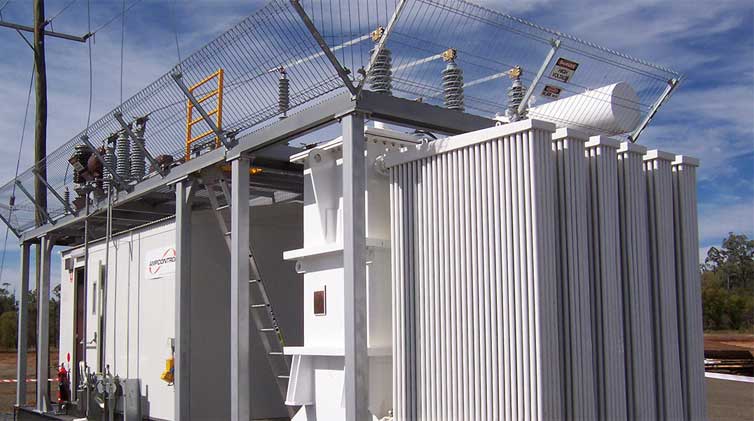What is an On-load Voltage Regulating Transformer?
The transformer has impedance. So during power transmission, a voltage drop will be generated, which will change as the load on the user side changes. The fluctuation of the system voltage and the change of the load on the user side together will cause a large voltage change. Under the premise of realizing no-power on-site balance, when the voltage fluctuation exceeds a fixed value, the on-load tapping transformer will adjust the voltage after a certain delay and keep the voltage stable.
Ⅰ. Introduction of the on-load regulating transformer
The transformer that can complete voltage switching through its taps during the load operation is called an on-load regulating transformer.
The task of the power supply transformer is to directly supply power to the load center. The primary side is directly connected to the main voltage network (220 kV and above) or the regional power supply grid (35 ~ 110 kV). This type of transformer provides active power to the load and often provides reactive power at the same time. It generally has a large short-circuit impedance. As the regional load changes, the power supply bus voltage will change accordingly if not equipped with an on-load regulating transformer.
Therefore, under the premise of realizing the regional balance of reactive power, the on-load tapping transformer changes with the increase or decrease of the regional load. It needs to cooperate with switching the shunt capacitors and low-voltage reactors of the reactive power compensation equipment and adjust the taps at any time. Ensure the quality of the user's power supply voltage.
Ⅱ. The role of the on-load regulating transformer
1. Improve the voltage qualification rate
Voltage qualification rate is one of the important indicators of power supply quality. Timely on-load voltage regulation can ensure the voltage qualification rate to meet the needs of people's lives and industrial and agricultural production.
2. Improve reactive power compensation capability and increase capacitor input rate
As a reactive power compensation device, the power capacitor, its reactive power output is in direct proportion to the square of the operating voltage. When the operating voltage of the power system decreases, the compensation effect will diminish. While when the active voltage increases, the on-load regulating transformer will overcompensate the electrical equipment, causing its terminal voltage to increase and exceed the standard regulations, which may damage the equipment insulation and cause equipment accidents. In order to prevent the power system from sending reactive power back and stopping the reactive power compensation equipment, causing waste and loss of reactive power devices, the main transformer tap switch should be adjusted in time to adjust the bus voltage to the qualified range. This eliminates the need to disable capacitor compensation.
3. Reduce power consumption:
The loss of electric energy transmission generated in the power distribution network of the power system will be the smallest only when the voltage is near the rated voltage. It is the most economical and reasonable way to use an on-load tap-changing transformer to keep the voltage of the busbar of the substation qualified and make the electrical equipment run at the rated voltage.
Based on the above analysis, many on-load regulating transformers should be used in the power grid. Fully understand and play its role, timely adjust the on-load tap changer of the main transformer to ensure the quality of power supply. Thus truly achieve safe, economical, and high-quality operation of the power grid.
Jump to Content Sections
Leave a Message
You May Also Like
 English
English  français
français  Español
Español  русский
русский  العربية
العربية  tiếng việt
tiếng việt  Malay
Malay  Indonesia
Indonesia  বাঙালি
বাঙালি 


